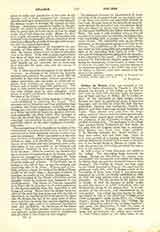

College de France, the, was founded in the interest of higher education by Francis I. He had planned the erection of this college as far back as 1517, but not until 1530, and then under the inspiration of Bude and Jean du Bellay, did he realize his idea. As the University of Paris taught neither Hebrew nor Greek, he established chairs of these two languages, and secured for them the best teachers obtainable, Paradisi and Guidacerio Vatable for Hebrew, and Peter Danes and Jacques Toussaint for Greek. Their salaries were paid from the king’s coffers, and they were to receive students gratuitously, a ruling which caused great rivalry on the part of the professors of the University of Paris, who depended on tuition fees. The professors of the college were accused before Parliament by Noel Beda, on the plea that the Vulgate would lose its authority since Hebrew and Greek were taught publicly. G. de Marcillac defended the “Royal Lectors”, as they were called, and won their case. Later on they were accused of a leaning towards Calvinism, and the Parliament forbade them to read or interpret any of the Sacred Books in Hebrew or Greek; however, the protection of the king prevented the execution of the sentence.
In 1534 a chair of Latin eloquence was added to the college. The succeeding kings favored the college. During the Revolution the courses were unmolested; the Convention even raised the salaries, by decree, from one and two thousand francs to three thousand. The College de France was first ruled by the Grand Aumfinier de France, who appointed the professors until 1661, when it became a part of the University of Paris, from which it was afterwards separated for a time, and finally reaffiliated in 1766. In 1744 the king himself took it under his direct authority. In 1795 the minister of the interior was in charge; in 1831 the minister of public works; in 1832 the minister of public instruction, who has retained the charge to the present day. It is independent of the university, and administered by its own faculty. The college has been known by different names: in 1534 it was called the “College of the Three Languages”; under Louis XIII, the “College
Royal”; during the Revolution, the “College National”; Napoleon called it the “College Imperial”, and under the Restoration, it bore the name of “College Royal”. Through the munificence of kings and governments the college grew steadily. In 1545 Francis added to the three chairs of lam-guage already established another with two teachers for mathematics, one teacher for medicine, and one for philosophy. Charles IX introduced surgery; Henry III gave it a course in Arabic languages; Henry IV, botany and astronomy. Louis XIII gave it canon law and Syriac; Louis XV, French literature; Louis XVIII endowed it for the Sanskrit and Chinese literatures. In 1831 political economy was introduced, and since then the progress of the sciences has necessitated new chairs, such as those of organic chemistry, physio-psychology, etc.
Renan clearly characterized the tendencies and methods of the College de France. In comparing them with those of the University of Paris, he wrote: “The Sorbonne guards the deposit of acquired knowledge—it does not receive sciences before they have shown the life in them—on the contrary the College de France favors the sciences in the process of formation. It favors scientific research.” An edict of 1572 forbade any but Catholics to teach in the College de France. This law was strictly obeyed as long as the college remained under Catholic authority, but in recent times it has had among its professors such enemies of Catholicism as Michelet, Renan, and Havet. On the whole, however, the faculty of the College de France has counted in its ranks brilliant men irrespective of creed, such as Aubert, Lalande, Daubenton, Delille, Cuvier, Vauquelin, Ampere, Biot, Rollin, Sylvestre de Sacy, Abel Remusat, Boissonade, Daunou, Burnouf, Tissot, etc. In 1907 there were fifty-nine professors and instructors.
J. B. DELAUNAY

